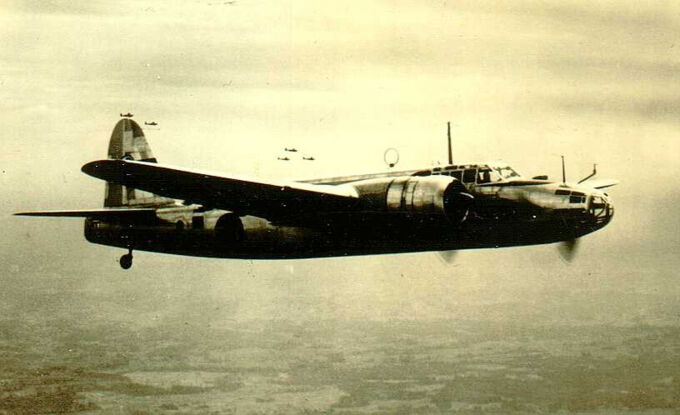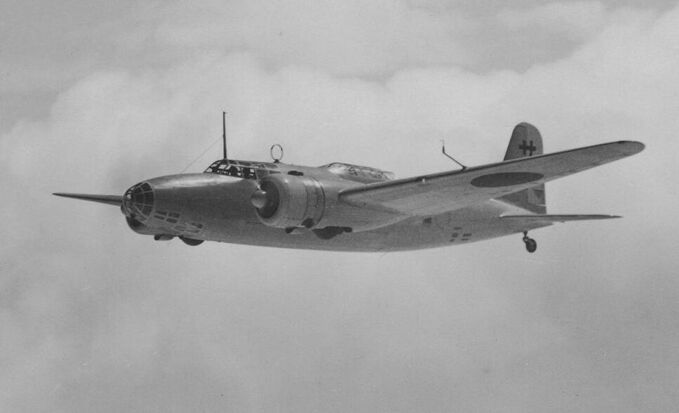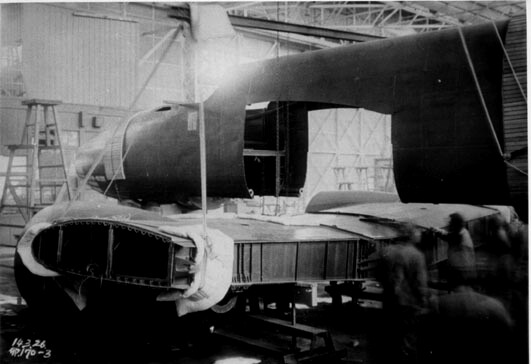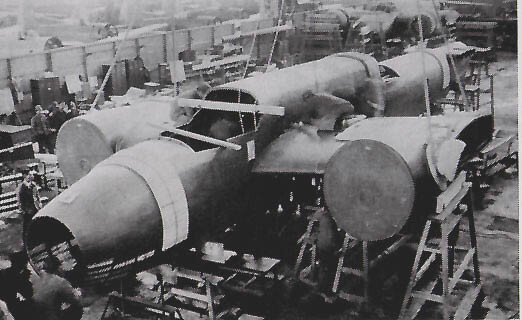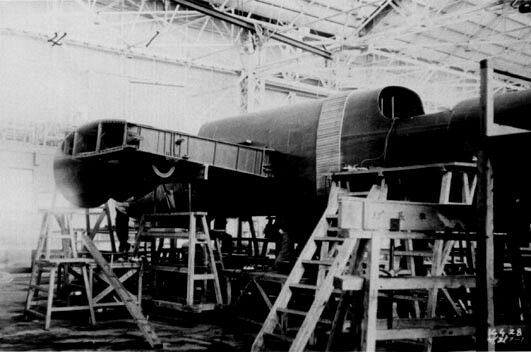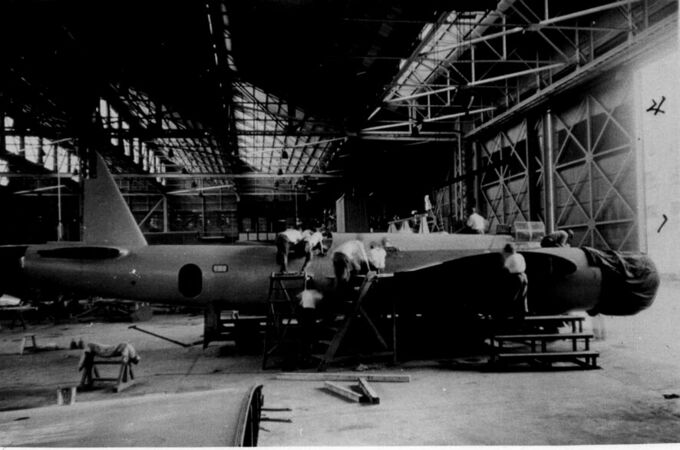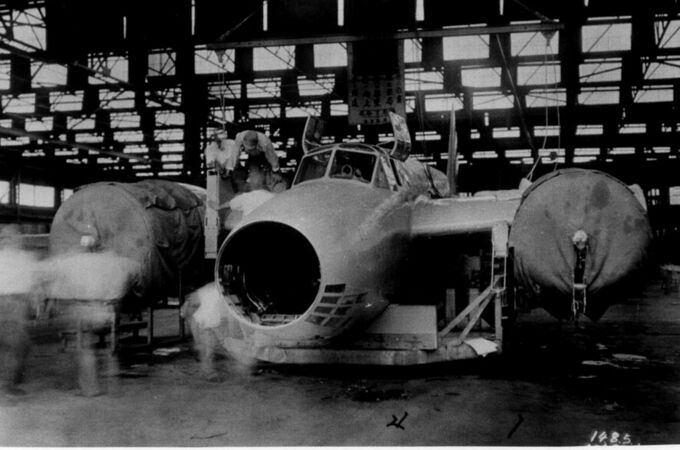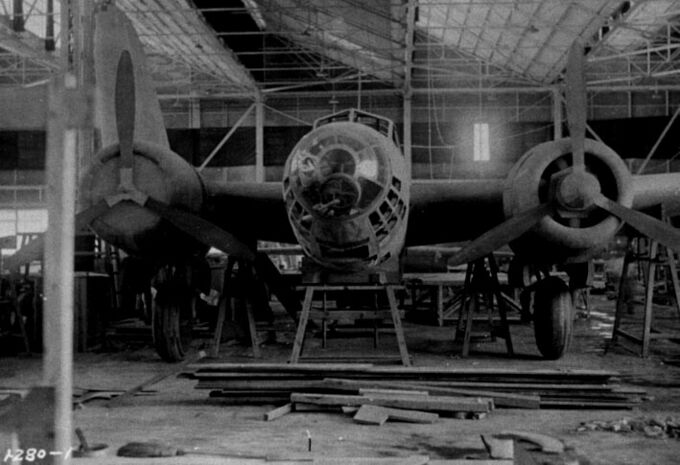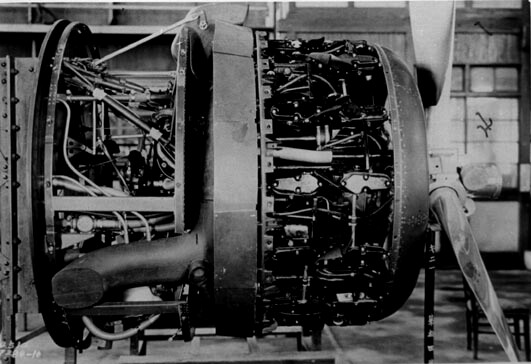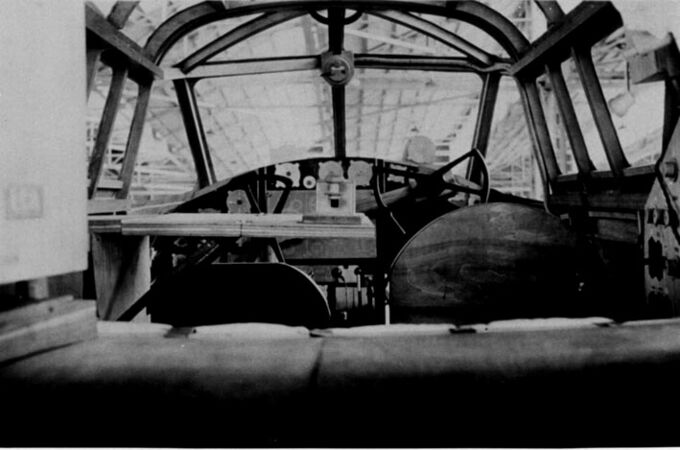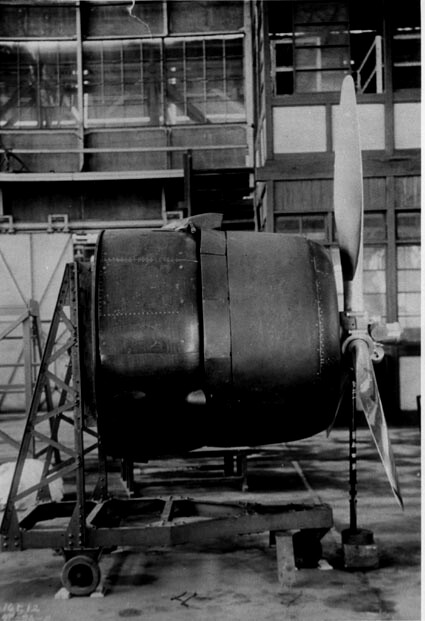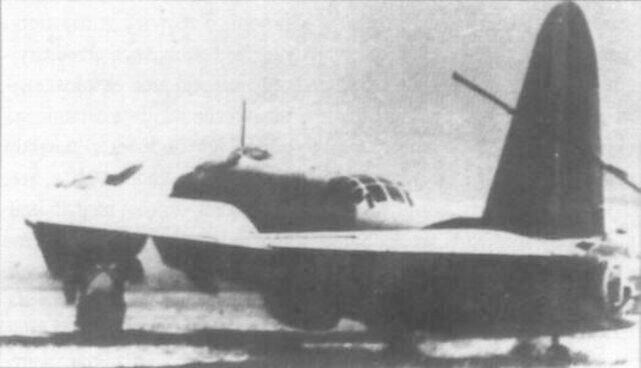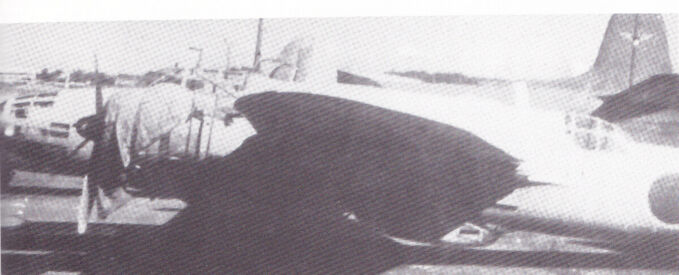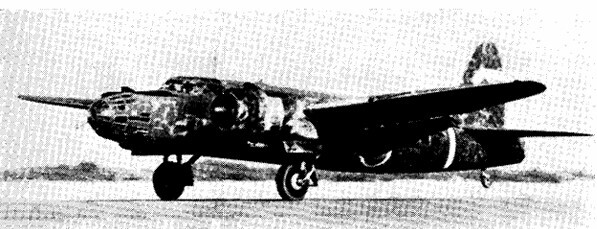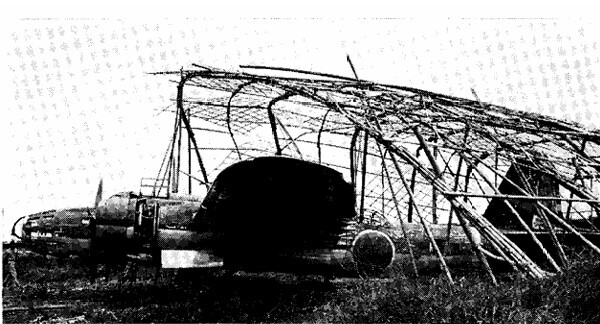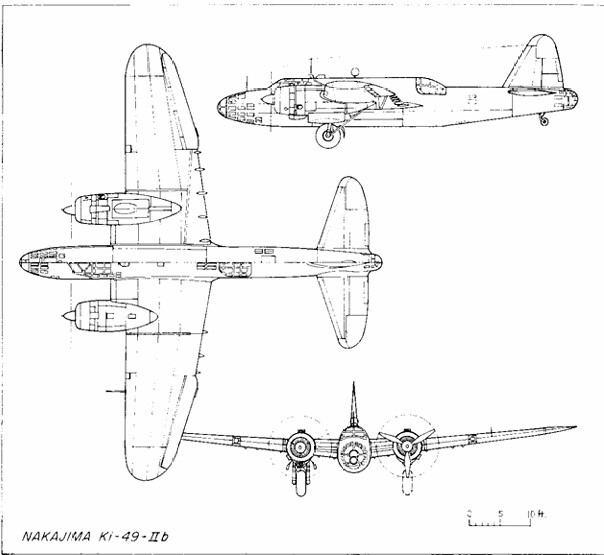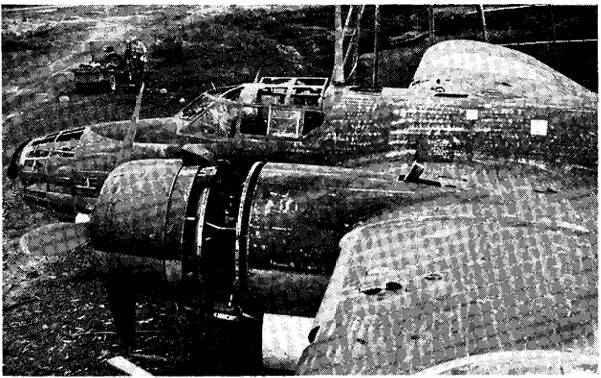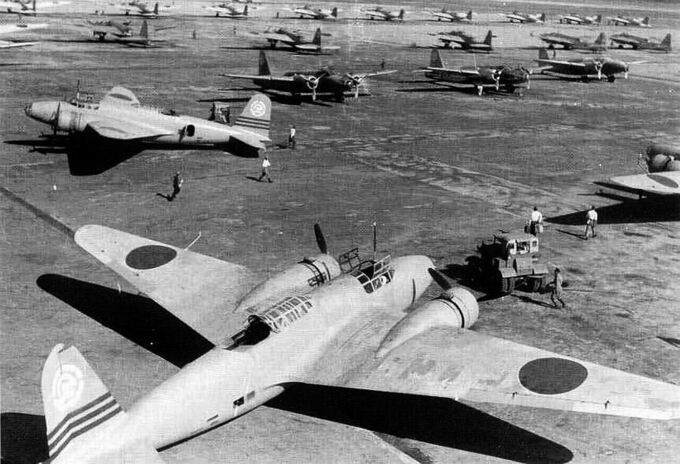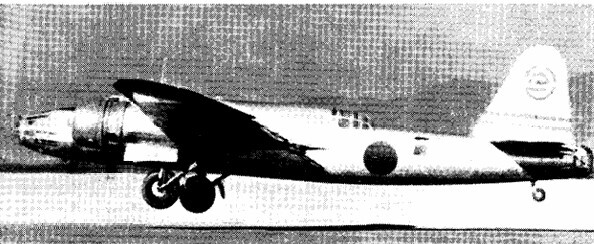The Nakajima Ki-49 was developed in response to a 1938 Imperial Japanese Army Air Force (IJAAF) specification, which aimed to replace the Mitsubishi Ki-21 (Army Type 97 Heavy Bomber) that was just entering service with the 14th Sentai. The specification called for an aircraft that could operate without fighter escort, relying instead on its speed and heavy armament for protection.
The Ki-49 was required to meet several performance criteria, including a maximum speed of 500 km/h, representing a 16% improvement over the Ki-21, a range of 3,000 km, and a bomb load capacity of 1,000 kg.
Start of development by Nakajima
Nakajima tasked their senior engineers, including Nishimura, Itokawa, and T. Koyama, with the development of the Ki-49 project, with Koyama being appointed the project leader.
Work on the aircraft began in the summer of 1938. The design aimed to meet the Army's specifications, which included a bomb load capacity of 1,000 kg (2,205 lb) and defensive armament, such as a flexible 20 mm cannon in the dorsal turret and several 7.7 mm machine guns, including one in a tail turret. Additionally, the crew needed adequate protection from enemy gunfire, and the fuel tanks were to be self-sealing for safety.
This was in response to the shortcomings of the Mitsubishi Ki-21, which had been used by the Army since 1937 but needed a more capable successor for improved speed, armament, and survivability.
Nakajima used the data they gained from working on the Ki-21 to design the Ki-49, with particular focus on handling characteristics. The aircraft featured a mid-mounted wing with a low aspect ratio to provide stability and maneuverability at medium to low altitudes.
Design features of the Ki-49
The wing center-section had a wider chord than the outer panels, allowing space for six self-sealing fuel tanks, three on each side of the fuselage, while also reducing drag. This design allowed the engine nacelles to be mounted forward of the flaps, improving aerodynamics.
To enhance the aircraft's take-off and climb performance, Fowler-type flaps were used, extending from the fuselage to the ailerons. Additionally, the outboard wing panels housed two self-sealing fuel tanks and one protected oil tank.
The defensive armament included a 20 mm Ho-1 cannon mounted in a dorsal turret on the port side, and several 7.7 mm Type 89 machine guns in various positions: nose, ventral, and port and starboard. A tail turret, which was the first of its kind on an Imperial Japanese Army aircraft, was equipped with an additional 7.7 mm machine gun.
Bombs were carried in a bomb bay that extended almost the entire length of the wing center-section. The first prototype, completed in August 1939, was powered by two Nakajima Ha-5 KAI radials, each rated at 950 hp for take-off and 1,080 hp at 4,000 m. It was equipped with Hamilton Standard two-pitch three-blade propellers and was primarily used for handling trials.
Performance trials
Service pilots reported positively on the Ki-49’s maneuverability, and its performance during trials was generally favorable.
The second and third prototypes were powered by the 1,250 hp Nakajima Ha-41 engines, which were chosen for the production variant. These prototypes were delivered by the end of 1939. Seven pre-production models, which were nearly identical to the prototypes except for the adoption of constant-speed three-blade propellers, were built in 1940.
All ten aircraft, including prototypes and pre-production units, underwent an extensive flight trial program, during which minor changes were made to the armament, protection, and seating arrangements. Ultimately, the aircraft was accepted for production as the Army Type 100 Heavy Bomber Model 1 (Ki-49-I) in March 1941.
Heavy losses
At the same time, troubling reports were coming in from China, where the Army Type 97 Heavy Bombers were suffering heavy losses. This was largely due to the inability of available fighter aircraft to provide escort throughout the entire mission. In response, Nakajima engineer Matsumura designed the Ki-58, an escort fighter version of the Ki-49. Powered by two Nakajima Ha-109 engines, the Ki-58 had its bomb-bay sealed to accommodate its new role. Between December 1940 and March 1941, three prototypes of the Ki-58 were built to test the concept.
The Ki-58, designed as an escort fighter for the Ki-49 bombers, featured several modifications including the replacement of the bomb-bay with a ventral gondola for additional armament and better protection. Its armament was increased to five flexible 20 mm Ho-1 cannons and three 12.7 mm Ho-103 machine-guns. The role of these aircraft was to fly alongside Ki-49 formations, providing protection during bombing missions. However, the idea was eventually abandoned when the Army Type 1 Fighter Hayabusa (Nakajima Ki-43) was found capable of escorting the bombers all the way to their targets.
Ki-80 development plan
Meanwhile, Nakajima also developed the Ki-80, a variant of the Ki-49 intended for formation leaders. Only two prototypes were built in October 1941, and they were used as test beds for the more powerful 2,420 hp Nakajima Ha-117 engine. Ultimately, the Ki-80 was canceled, and the two prototypes did not enter production.
The war begins
The Ki-49-I Donryu (Storm Dragon) production model was virtually identical to the pre-production units. Deliveries of the Ki-49-I began in August 1941, marking the start of its operational service with the Japanese Army.
When the war began, the 61st Sentai began transitioning from the older Ki-21 bombers to the new Ki-49, but due to slow initial deliveries of the Donryu, they retained some of the older aircraft until February 1942. As more Ki-49's were produced, they entered service in China.
The Ki-49, known by the Allies as "Helen," soon became a common sight over New Britain, New Guinea, and during operations over Australia's Northern Territory. Despite its presence, early operations revealed significant issues with the Ki-49. Pilots found it underpowered and more difficult to fly than the Ki-21. Its speed, while better than the Ki-21, was still insufficient to avoid interception, and its bomb-load capacity was also lower. However, the Ki-49's defensive features were praised, especially its armor and self-sealing fuel tanks, which helped protect the crew. The aircraft's defensive armament was also a strong point, with no significant blind spots except for directly above and below the aircraft.
1942 upgrades
In spring 1942, the Ki-49 was upgraded with more powerful 1,450 hp Nakajima Ha-109 engines, replacing the original 1,250 hp Ha-41 radials. The engine nacelles were only slightly modified since the new engines had the same diameter as the previous ones. Other changes based on combat experience included improved self-sealing tanks, stronger armor plating, and a new bombsight.
The upgraded version, now known as the Ki-49-IIa, was accepted into production in August 1942. In response to the increasing effectiveness of Allied fighters, the aircraft’s defensive armament was enhanced in late-production models. The original 7.7 mm machine guns in the nose, ventral, and tail positions were replaced with more powerful 12.7 mm Ho-103 machine guns in the Ki-49-IIb, improving the aircraft’s defensive capabilities.
The Ki-49-II's never fully replaced the Ki-21-II's in IJAAF bomber units. The Ki-49's were primarily assigned to units operating in New Guinea and China/Manchuria. When the Allies returned to the Philippines, the Donryus were heavily involved in combat on the new front, suffering significant losses.
Kamikaze attacks
By December 1944, most surviving Ki-49's were used in kamikaze attacks against the Allied fleet during the landing on Mindoro. Despite being equipped with better armament and protection than earlier Japanese bombers, the Ki-49 was not considered satisfactory by the IJAAF. Pilots complained that its speed at low and medium altitudes was still inadequate, and its flight characteristics were less favorable than those of the older Ki-21-II.
Further improvements
To improve performance, Nakajima designed a newer version of the Ki-49 with the 2,420 hp Nakajima Ha-117 engines, the most powerful fourteen-cylinder radials ever developed by Japan. These engines had been tested on the Ki-80, with hopes of reaching a maximum rating of 2,800 hp. However, engine issues persisted, and only six Ki-49-III aircraft were produced between March and December 1943.
Other production of the standard Ki-49 continued, with Tachikawa building 50 units in 1943-44, although they faced significant production difficulties. There were also plans to have the aircraft manufactured by Mansyu Hikoki Seizo K.K., but these were never realized.
Despite its shortcomings, the Ki-49 was adapted for various roles. Some Ki-49-I's were fitted with electronic and magnetic detection gear to serve in an anti-submarine role. Some Ki-49-II's were converted for use as troop transports, and others were modified in the field to serve as night fighters.
Night fighting adaptations
In a unique adaptation, some Ki-49-II's were modified for night fighting in pairs. One aircraft, known as the "hunter," was equipped with a searchlight in the nose, while the "killer" carried a 75 mm cannon in the fuselage. However, this configuration proved disappointing, as the aircraft lacked the necessary performance to be effective in the role.
In the suicide bomber role, the Ki-49-II had all its armament removed, and the crew was reduced to just two pilots. It could carry a substantial 1,600 kg (3,527 lb) bomb load, but this role was also short-lived. Despite its relatively brief and uneventful operational life, the Ki-49 holds a significant place in Japanese aviation history, as it was the first Army bomber to be equipped with a tail turret.
Units Allocated:
61st, 62nd, 74th, 95th and 110th Sentais; 11th Hikoshidan; Hamamatsu Army Heavy Bomber Flying School
https://www.silverhawkauthor.com/post/warplanes-of-japan-nakajima-ki-49-donryu
Tadashi Nozawa, "Japanese Aircraft Collection: Nakajima Edition,"Shuppan Kyodosha, 1963, page. 120. National Bibliography Number:83032194
Military Classics Vol. 55 Fall 2016 Issue, Icarus Publishing Co., Ltd., December 1, 2016, pages. 31, 46-47
Francillon, René J. (1979). Japanese Aircraft of the Pacific War. London: Putnam. pages. 223–229. ISBN 0-370-30251-6.
For pictures:
https://japanese-warship.com/photo/ki58-photo/
https://en.wikipedia.org/wiki/Nakajima_Ki-49
https://www.secretprojects.co.uk/threads/nakajima-ki-49-donryu-helen-special-versions.33839/
https://www.ne.jp/asahi/airplane/museum/cl-pln5/donryu-p.html
